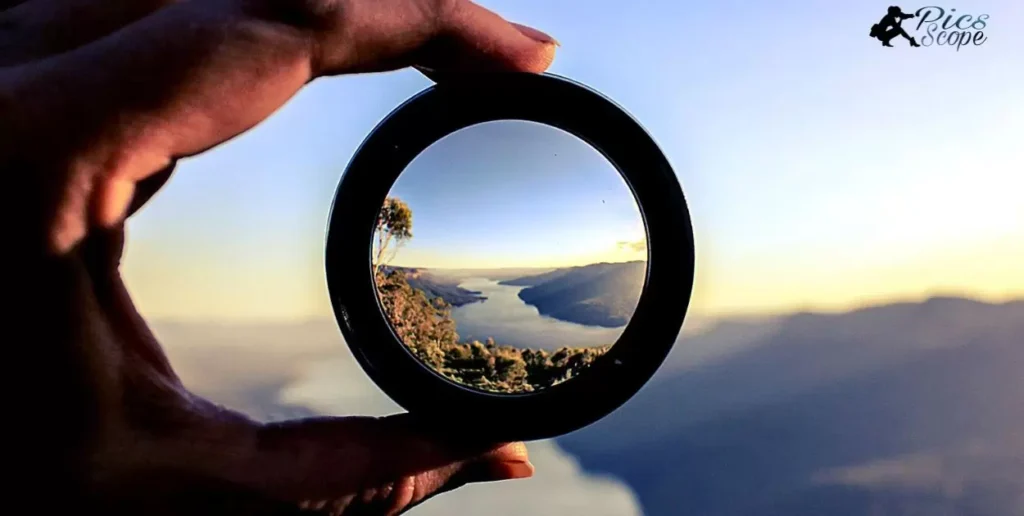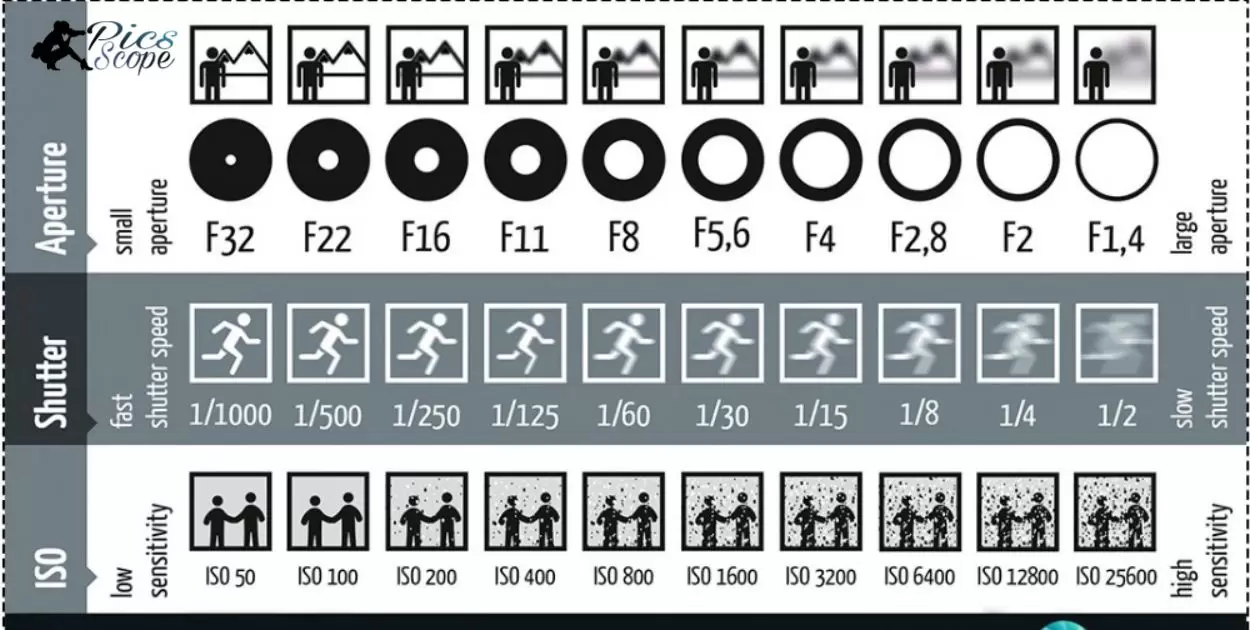Photography captures images through a camera, involving the recording of light to create visual representations. Various elements like exposure, focus, and composition are manipulated to compose compelling photographs.
What Does Stop Down Mean In Photography? This question piques the curiosity of photographers at all skill levels. The phrase hints at a critical technical aspect essential for achieving desired photographic outcomes.
In photography, stop down means reducing the aperture size, controlling the amount of light entering the camerThis adjustment influences the depth of field, affecting sharpness and focus. Photographers use stop down techniques for artistic effects, exposure control, or enhancing subject clarity.
Basics Of The Photography
Photography involves capturing images using a camera. Essential elements like light, exposure, and composition shape the fundamentals of photography. Light plays a key role in creating visually appealing images, while exposure and composition determine the overall quality.
In photography basics, it’s crucial to comprehend the impact of light and the significance of exposure. Learning how to manipulate these elements allows photographers to craft compelling compositions. By mastering these foundational concepts, photographers can enhance their skills and create stunning visual narratives.
How does light play a crucial role in photography?
In photography, light is like a painter’s brush, shaping and defining every image. It’s not just about brightness but also the direction, creating shadows and highlights that add depth. Photographers use light strategically, adjusting settings to capture the scene with the right mood and clarity.
Understanding how light influences a photo is fundamental. It determines the colors, shadows, and overall atmosphere. Whether it’s natural sunlight or artificial lighting, photographers actively manipulate light to craft visually compelling images.
The significance of exposure in photography

Light is essential in photography. It illuminates the subject, creating the image captured by the camera. Without adequate light, photos may appear dark or lack clarity. Photographers manipulate light to achieve desired effects, emphasizing the importance of understanding and working with light in the photographic process.
Photographers control light through various means. They adjust camera settings, use artificial lighting, or choose the right time of day for natural light. The way light interacts with the subject influences the final image, making it a fundamental aspect that photographers actively manage to capture compelling and well-exposed photos.
The role of composition in creating impactful photographic images
- Arrangement of Elements: Composition involves arranging visual elements within the frame.
- Rule of Thirds: Applying the rule of thirds guides the placement of key elements for balance.
- Leading Lines: Creating lines that guide the viewer’s eye through the image enhances composition.
- Framing Techniques: Utilizing natural or man-made frames adds depth and focus to photographs.
- Contrast and Color: Balancing color and contrast contributes to the overall impact of the composition.
- Foreground and Background: Careful consideration of foreground and background elements enhances depth.
- Symmetry and Asymmetry: Experimenting with symmetrical or asymmetrical compositions adds visual interest.
- Negative Space: Strategic use of negative space emphasizes the main subject and creates a balanced composition.
- Viewpoint and Perspective: Choosing the right angle and perspective influences the viewer’s perception of the image.
- Experimentation: Trying different composition techniques allows photographers to discover their unique style.
What Does Stop Down Mean In Photography?
In photography, stop down means adjusting the lens aperture, controlling how much light enters the camera. It’s like changing the window size to control the brightness of the room. This adjustment affects the sharpness and focus of the image, giving photographers creative control.
Understanding stop down is crucial for photographers. It helps in achieving specific effects and improving image quality. It’s a practical skill that adds versatility to your photography toolkit, allowing you to create captivating and well-defined images.
How does the concept of stop down impact photography?
Exploring the intricacies of Street Photography Legal In Germany brings insight into the regulations governing capturing public scenes. Knowing the permissible boundaries is crucial for photographers to navigate and express their art within legal frameworks.
Understanding whether Street Photography Legal In Germany allows freedom or imposes restrictions shapes how photographers engage with urban environments and human subjects. Staying informed ensures a harmonious blend of artistic expression and legal compliance in the vibrant landscape of German street photography.
Why is it important for photographers to comprehend stop down?
Photographers need to grasp the concept of stop down because it directly influences the sharpness and focus of their images. When photographers understand how to adjust the aperture size.
They gain control over the amount of light entering the camera. This control is essential for achieving desired artistic effects, managing exposure, and enhancing the clarity of subjects in photographs.
In practical terms, stop down becomes a valuable tool in a photographer’s skill set. It allows them to navigate various lighting conditions and create images with the right balance of sharpness and depth. By comprehending stop down, photographers empower themselves to elevate the quality of their work and capture visually appealing moments with precision.
Demystifying the technical aspects of aperture in photography
Understanding aperture in photography is like adjusting a window to control how much light comes in. It’s not a mysterious button but a practical tool for capturing great shots. Aperture, measured by f-numbers, simply means the size of the opening in the camera lens.
When you stop down the aperture, you make this opening smaller. This isn’t about complex settings; it’s about creating a crisp focus on your subject while controlling the overall brightness of your photo. So, demystifying aperture in photography is as straightforward as adjusting a dial to get the perfect shot.
How does adjusting aperture size influence the final image?
- Depth of Field: Changing the aperture size affects how much of the image is in focus.
- Background Blur (Bokeh): A wider aperture creates a shallower depth of field, leading to a blurred background.
- Sharpness and Clarity: A smaller aperture (larger f-number) increases the overall sharpness of the image.
- Amount of Light: Aperture size controls the amount of light entering the camera, impacting exposure.
- Creative Control: Adjusting aperture allows photographers to influence the mood and style of their images.
Practical Applications of Stop Down in Photography

Photographers often wonder, What Does Stop Down Mean In Photography? Well, mastering this concept opens a realm of practical applications in the art of capturing images. Adjusting the aperture, or stopping down, is a key technique. It’s not just a technicality; it’s a tool for creative expression.
In real-world scenarios, photographers use stop down for effects like isolating a subject against a blurred background. This technique enhances exposure control, ensuring well-balanced images.
How can photographers use stop down for creative effects?
Photographers use stop down for creative effects by adjusting the camera’s aperture. This involves making the aperture size smaller, allowing less light to reach the camera sensor. This technique increases the depth of field.
Making more elements in the frame appear sharp and in focus. It’s a simple yet powerful way for photographers to control the visual impact and storytelling in their images. Experimenting with stop down can lead to stunning effects. For example, capturing portraits with a wide aperture creates a beautiful background blur, emphasizing the subject.
On the other hand, using a smaller aperture for landscape photography ensures that both foreground and background details are sharp. Mastering this technique provides photographers with a versatile tool for expressing their creativity and enhancing the visual appeal of their photographs.
What role does stop down play in exposure control?
In photography, stop down is like adjusting a window to control how much light comes in. Imagine a camera as a room with a window – stop down is like making the window smaller. This helps control how bright or dark your photo turns out.
When you stop down, you’re narrowing the opening that lets light into the camera. This is handy when you want to take pictures in bright sunlight without overexposing them. So, the next time you’re out taking photos, remember that stop down is your go-to tool for managing exposure and capturing the perfect shot.
A guide to using stop down
In photography, achieving clear and sharp subjects is crucial for impactful images. Using stop down is like adjusting a visual dial on your camera to make sure your main subject stands out. When you reduce the aperture size by stopping down, it increases the depth of field, ensuring more of your scene stays sharp and focused.
Photographers often find that using stop down helps eliminate distractions in the background, directing the viewer’s attention straight to the main subject. It’s a technique embraced by many to create professional-looking photographs by ensuring that what you want to highlight is crystal clear and visually engaging.
Real-world examples illustrating the impact of stop down on images
Photography becomes more engaging when you grasp the impact of stop down on images. Picture a vibrant flower with a sharply focused bloom against a dreamy, blurred background achieved by skillful use of stop down to control aperture size.
In contrast, widening the aperture creates a stunning portrait where the subject pops against a pleasantly blurred landscape, showcasing the practical influence of stop down in real-world photography. Understanding these examples empowers photographers to craft visually compelling images with precision and creativity.
Optimizing Photography Skills, Tips and Techniques
Mastering photography involves refining your skills for captivating images. To optimize your photography, start by understanding your camera settings. Adjust the aperture, experiment with shutter speed, and practice framing to enhance your composition. These hands-on techniques empower you to capture the perfect shot.
Explore different lighting conditions and their impact on your photos. Learning to adapt to varying environments sharpens your ability to optimize settings on the fly. By incorporating these tips into your routine, you’ll gradually elevate your photography skills and produce images that stand out.
How can photographers leverage stop down for better compositions?
Photographers use stop down to improve compositions by adjusting the aperture size on their cameras. This involves reducing the aperture, allowing less light to reach the sensor. By doing so, they increase the depth of field, ensuring that more elements in the photo are in sharp focus.
This technique is handy for capturing landscapes or portraits where both foreground and background details matter. It’s a straightforward way for photographers to enhance the overall clarity and impact of their images, making subjects stand out against a precisely blurred background.
What are the common challenges when implementing stop down?
Photographers often face challenges when using stop down in their work. One common issue is finding the right balance between a small aperture for increased depth of field and the potential loss of light. It requires a careful adjustment to avoid underexposure while achieving the desired focus.
Another challenge is adapting to changing lighting conditions. When implementing stop down, photographers need to be agile in adjusting settings to maintain proper exposure. The real-time nature of photography demands quick decisions to overcome challenges and produce high-quality images.
Fine-tuning focus,Maximizing the benefits of stop down
In photography, fine-tuning focus is crucial for getting sharp and clear images. When we talk about aperture and stop down, it means adjusting the camera’s aperture to control the depth of field. By doing this, photographers maximize the benefits of aperture and stop down, ensuring that their subjects are precisely in focus.
When you fine-tune focus through aperture and stop down, it’s like sharpening the details in a picture. This technique is especially useful when shooting portraits, macro shots, or landscapes, allowing photographers to emphasize specific elements in their compositions. In essence, mastering the art of fine-tuning focus enhances the overall quality and impact of the photograph.
Advanced strategies for utilizing stop down in diverse scenarios
In photography, using stop down in various situations can greatly enhance your images. One effective strategy is to employ a smaller aperture (larger f-number) when shooting landscapes. This technique increases the depth of field, ensuring that both foreground and background elements are sharply in focus.
For portrait photography, another smart approach is to stop down slightly to achieve a pleasing background blur. By choosing a moderate aperture setting, like f/4 or f/5.6, you maintain subject clarity while creating a beautifully blurred background.
Advanced Photographic Concepts
Photographers often wonder about going beyond the basics and exploring advanced photographic concepts. How does understanding these concepts elevate their expertise? It’s about integrating new techniques, like aperture and stop down, into their workflow for more creative and impactful images.
In practical terms, photographers can experiment with aperture and stop down techniques to push their creative boundaries. This involves adjusting the aperture size, playing with exposure, and fine-tuning focus to achieve unique effects.
How does understanding stop down elevate photographic expertise?
Understanding stop down enhances your photography skills. When you grasp this concept, you gain control over your camera’s aperture settings. This control allows you to manipulate the amount of light entering the camera, influencing the sharpness and focus of your images.
Photographers who comprehend stop down can create visually appealing effects. They can achieve a desired depth of field, control exposure, and capture subjects with enhanced clarity. Learning to use stop down effectively is a practical skill that can elevate your expertise and add versatility to your photographic toolkit.
Integrating stop down into a comprehensive photography workflow
Photographers seamlessly blend stop down into their workflow to enhance image quality. They actively choose aperture settings, adjusting them for specific effects and outcomes. This intentional use of stop down ensures that every photograph captures the desired depth of field and sharpness.
In a comprehensive photography workflow, understanding when to stop down becomes second nature. Photographers instinctively gauge lighting conditions and subject requirements, making immediate adjustments.
Addressing misconceptions about stop down in photography
Many people think that stop down in photography is only about reducing light, but that’s not the whole story. It’s not just a technical adjustment; it’s a creative tool. Some assume it’s only for experts, but understanding it can benefit photographers of all levels.
A common misconception is that stop down is only for adjusting exposure. However, it also plays a vital role in controlling depth of field. Don’t believe the myth that it’s complicated – learning to stop down can significantly enhance your photography skills, offering more creative control over your images.
Experimentation with stop down techniques
Photographers can expand their creativity by experimenting with stop down techniques, which involve adjusting the aperture size, a key aspect of stop down. This hands-on approach allows them to actively control the amount of light reaching the camera sensor.
Photographers can explore various visual effects, enhance image clarity, and create captivating compositions by incorporating stop down and tweaking the aperture. Incorporating stop down into one’s photographic repertoire, specifically manipulating the aperture, opens up a realm of possibilities.
This active engagement with technical aspects, such as adjusting the aperture size, adds a dynamic layer to the creative process. Photographers can play with depth of field, emphasizing or blurring background elements, fostering an environment where they actively shape the visual narrative of their images.
FAQ’s
What is the significance of stop down in photography?
Adjusting the aperture size through stop down controls the amount of light entering the camera, influencing depth of field and focus.
How does stop down contribute to creative photography?
Stop down enables photographers to experiment with aperture settings, unlocking creative possibilities and enhancing visual effects.
In what situations should photographers consider using stop down?
Photographers should use stop down when they want precise focus, particularly in portrait, macro, or landscape photography.
How does fine-tuning focus with stop down impact image details?
Fine-tuning focus through stop down sharpens image details, adding clarity and emphasizing specific elements in a composition.
Can stop down be applied to various types of photography?
Yes, stop down is a versatile technique applicable to different genres, allowing photographers to tailor it to their specific creative needs.
Conclusion
Understanding What Does Stop Down Mean In Photography? is a valuable asset for photographers seeking to enhance their skills. Mastering the manipulation of the stop down technique, particularly in adjusting the camera’s aperture, opens up a world of creative possibilities.
It allows photographers to control the depth of field, fine-tune focus, and ultimately craft images with precision and impact. As photographers delve into the nuanced realm of stop down and aperture, they gain the ability to shape the visual narrative of their photographs.
The knowledge empowers them to go beyond the basics, experiment with advanced techniques, and push the boundaries of their creativity. In essence, grasping the significance of stop down in photography is a journey toward achieving sharper, clearer, and more compelling images.







